- 1. What is a Triathlon?
- 2. How Long is a Triathlon?
- 2.1. Sprint
- 2.2. Olympic
- 2.3. Ironman
- 2.4. Half-Ironman
- 3. How Do You Train for a Triathlon?
- 4. How Long Do You Train?
- 5. When Do You Train?
- 6. How Do You Train?
- 7. Training Essentials
- 7.1. Swimming
- 7.2. Biking
- 7.3. Running
- 8. Nurture your Body with Food
- 9. Seek Support from Others
- 10. Put your Training to the Test
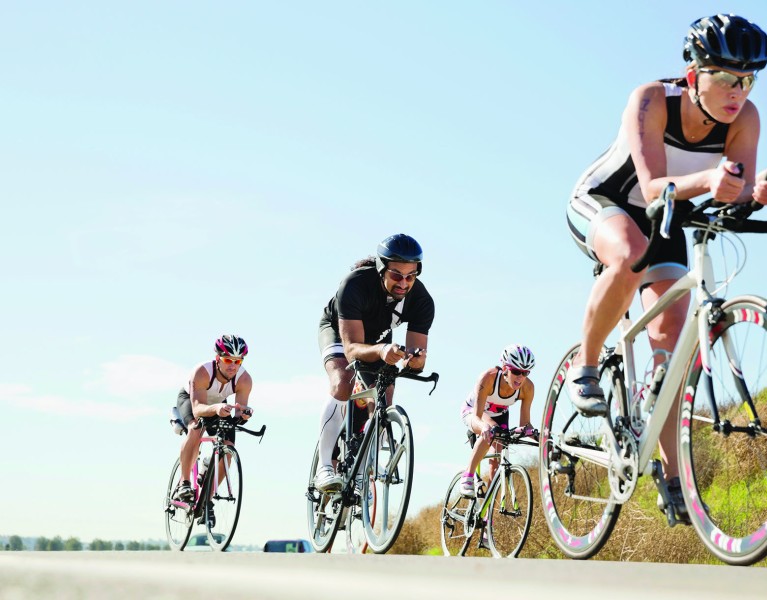
How to Train for a Triathlon
Table of Contents [Show]
Have you ever thought about participating in an event that pushes your limits and demonstrates what you’re truly capable of? The triathlon — a challenging, exciting, and addicting three-part race — will do exactly that! Competing in a triathlon, however, calls for months of vigorous training and mental determination. Understanding what is involved in triathlon, as well as following a well-designed training plan, will help you feel more confident when the time comes for your first event. Here’s a quick overview of the race and information on how to train in order to achieve your goal of becoming a full-fledged triathlete.
What is a Triathlon?
A triathlon is a physically demanding race that incorporates three events - swimming, biking, and running - into one event. The triathlon was invented in the 1970s when a track club in San Diego was in search of an alternative method of race training. Soon, the three-sport race gained popularity across the globe, and in 2000, it even became an official Olympic sport. Today, thousands of triathlons of varying lengths and difficulties are held each year. Once you have your training routine down, you should have no problem finding a triathlon that fits your competitive needs.
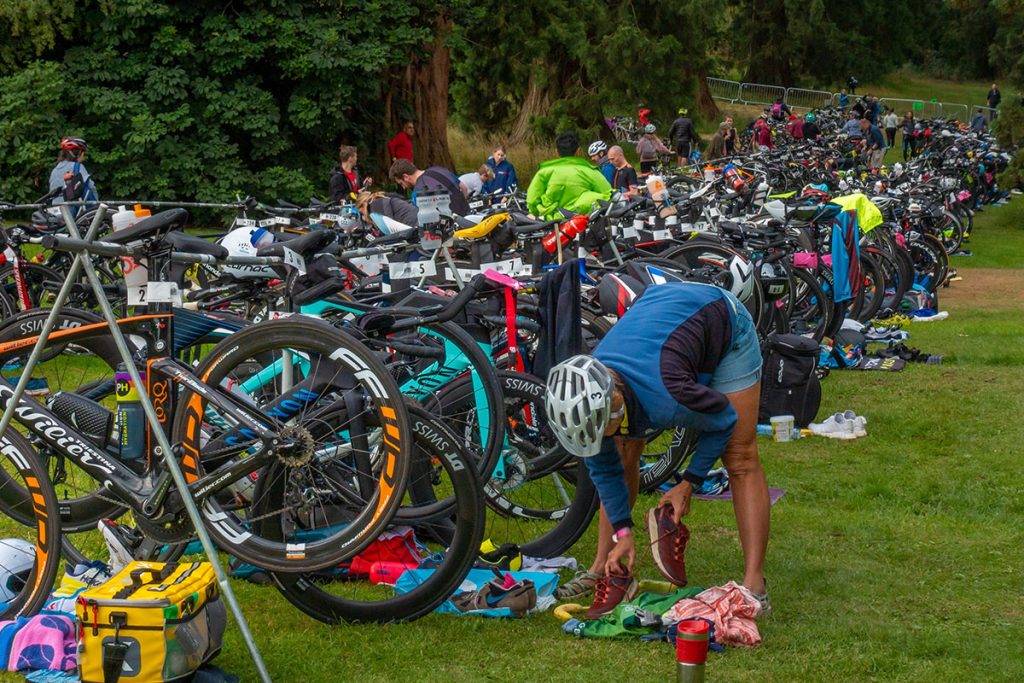
How Long is a Triathlon?
While the order of events (swim/bike/run) is always the same, the length of a triathlon can vary. Lengths range from beginner-friendly races, all the way to world-class events for elite athletes. Here are four of the most common triathlon formats.
Note: Sprint and Olympic distances are typically listed with metric distances. Both metric and Imperial distances are listed below.
Sprint
The Sprint triathlon is a great option if you're new to the challenging world of multi-sport events. Sprint distances typically consist of a half-mile swim (750-800 meters), a 12.4-mile (20K) cycle, and a 3.1-mile (5K) run. You can also find events half this length known as “super sprints.”
Olympic
The Olympic triathlon is twice as long as a Sprint. The swim portion is .93 miles (1.5K) long, the cycling is 24.8 miles (40K) and the running distance is 6.2 miles (10K).
Ironman
The Ironman triathlon, with the popular World Championship event held in Kona, HI each year, is the ultimate test of mind, body, and spirit. A typical Ironman event consists of a 2.4-mile swim, a 112-mile cycling distance, and a 26-2-mile (the length of a full marathon) run. Wow, now that’s a lot of miles!
Half-Ironman
The half-Ironman triathlon is exactly what it sounds like, half the length of a full Ironman. These races usually consist of a 1.2-mile swim, a 56-mile cycle, and a 13.1-mile run.
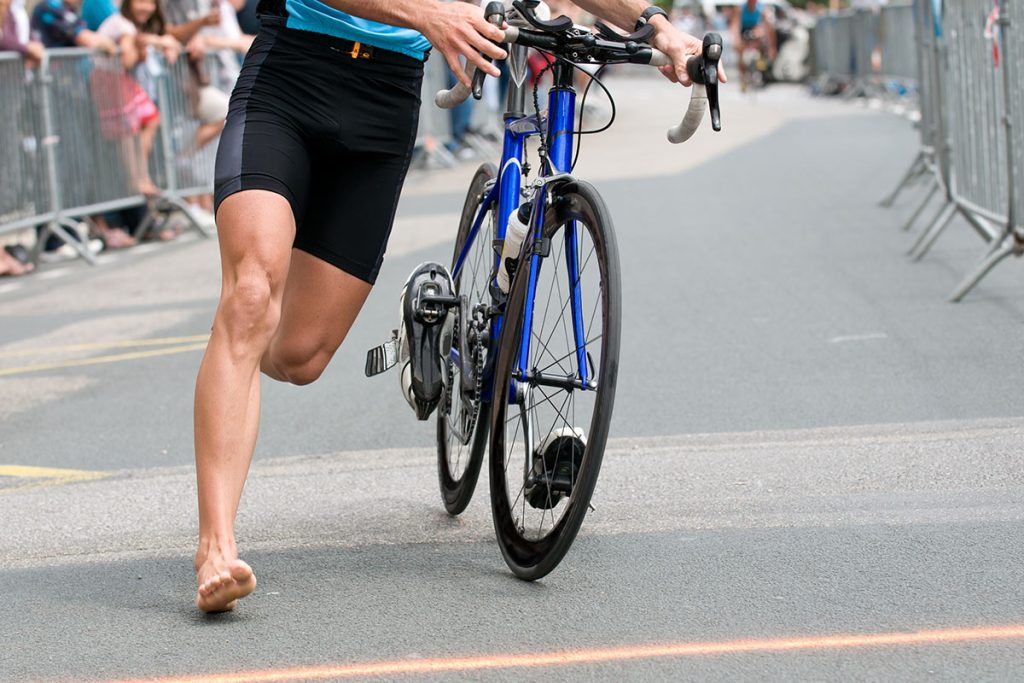
How Do You Train for a Triathlon?
Training for a triathlon is a physical challenge, but it's also a mental and, for some, a spiritual trial, as well. It's a good idea to prepare for all three aspects. Before beginning your physical training, you may want to start a journal and write down your goals, as well as your reasons, for participating in a triathlon. Do you want to work your way up and enter an Ironman event? Are you simply looking for a challenge? Are you in need of a change and want to get in shape? Whatever your reasoning, it’s important to write down your goals in order to help you stay motivated. You can also look back at your notes for inspiration as you go through the months of rigorous training.
How Long Do You Train?
Physical training for a triathlon should begin at least three months before the event but may vary depending on your own fitness level and familiarity with swimming, biking, and running. If you're less confident with your abilities, plan for a longer training schedule, possibly 6 months or more.
When Do You Train?
Begin by training a minimum of 3 days a week, gradually increasing the days as you build strength and endurance. An ideal week would include one day of swimming, one focused on cycling and another on running, with one hour of strength training each of those days.
As you increase your training days, your goal should be to finish two sessions of each event (swimming, biking, and running) throughout each week. Better yet, at least two of your training days should include back-to-back sessions (known as a brick workout) of either a swim and bike workout or a bike and run workout.
How Do You Train?
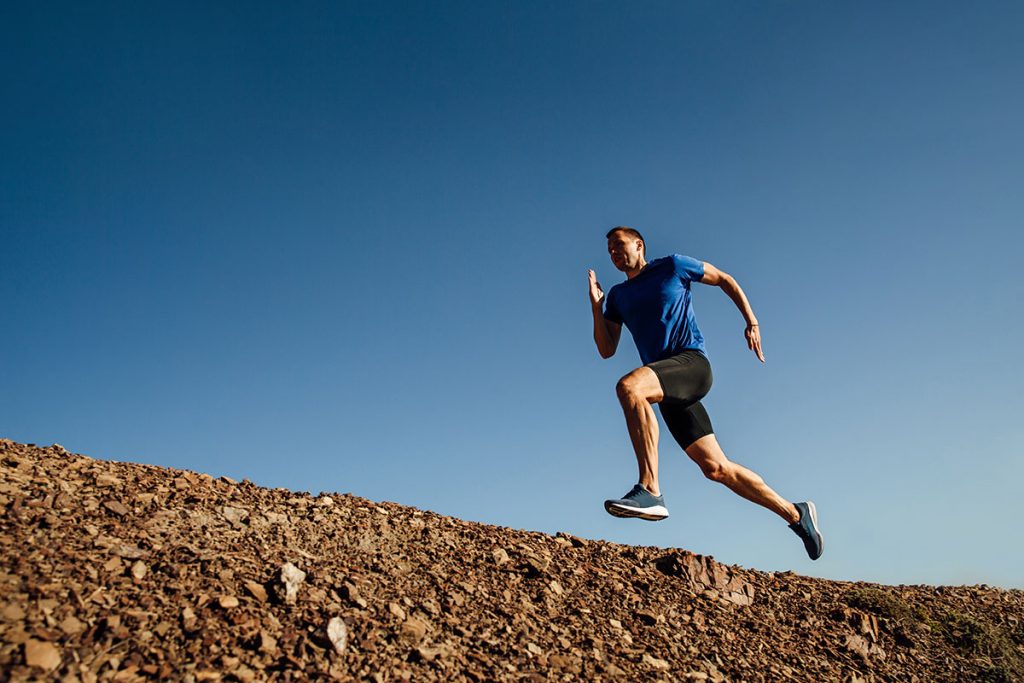
Go the extra mile. Just as you increase your training days, gradually build and increase your distances for each event. It is recommended that you slowly add more distance with each training week. By the time of your scheduled race, you should be comfortable with and able to complete each distance. A good rule of thumb when training is to know the distances you are training for and strive toward actually completing at least 10 percent more than those distances before race day.
Helpful hint: For longer events, like the Half- and Ironman, it's not necessary to train to the full distance of the run; 75% of distance is a good goal. Some athletes train by time (vs. distance).
Create the same conditions. It’s ideal to try and simulate the same or similar conditions to your race. If the race course is hilly, find a hilly terrain for training. If the swim portion of race is in open water, find the time to jump in and practice in a lake or ocean near you.
Don’t resist resistance. Along with endurance training, include resistance training in your routine. The main focus should be on strengthening your legs and glutes, as they will be your best ally, especially during the running portion. Strengthening your arms and chest will help you swim more efficiently and keep a firm grip on your bike. The abdomen, back, and shoulders should not be missed, since these areas provide mobility and stability to sustain you and keep you going strong.
Rest, relax and rejuvenate. It's absolutely essential that you include recovery days in your workout routine. Rest not only restores you physically but mentally as well. Plan to rest and recover right before or just after longer, more rigorous training days. Take a warm bath with epsom salt, drink warm tea or golden milk, read a new book, practice yoga, meditate or do whatever else that makes you feel relaxed and restored.
Training Essentials
Swimming
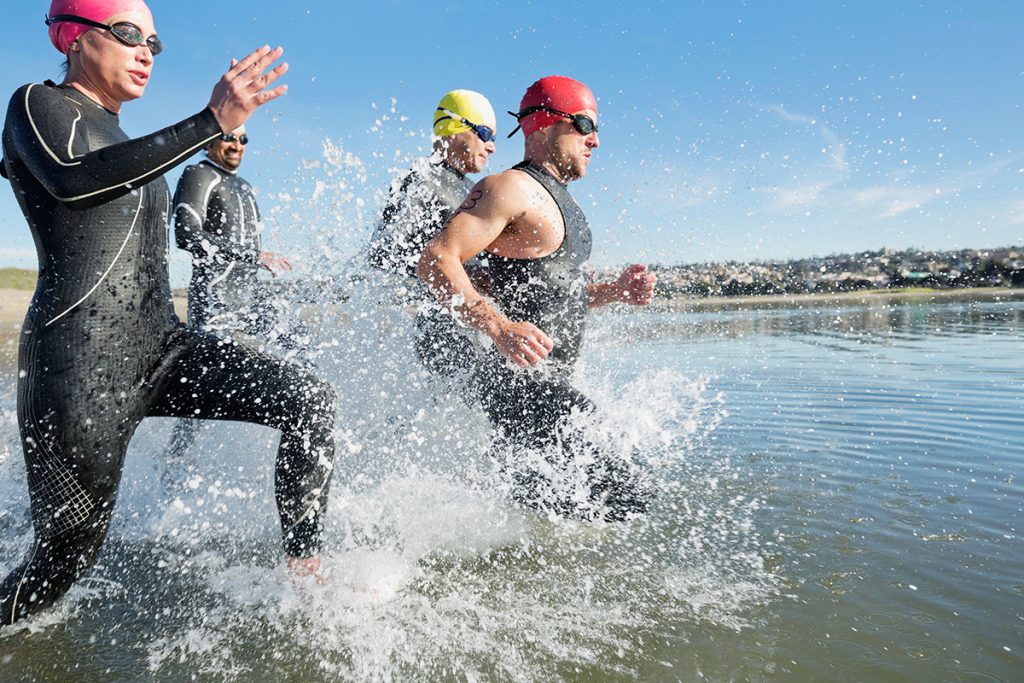
Swimming is an amazing full-body workout. The most convenient way to train for the swimming portion of the triathlon is at your local pool. If your race is held in open water, acclimate yourself to the feel of open-water swimming, as it's vastly different than in a pool.
Training. Incorporate swimming into your routine at least twice a week. Before venturing out to open water swimming, make sure you are comfortable in a more controlled environment. As open-water swimming environments can be unpredictable, keep yourself safe by swimming with a partner or in a group. Exercises like squats, lunges, tricep curls, rowing, and planks will strengthen your arms and legs for more efficient swimming.
Technique. Triathletes use the freestyle stroke (or front crawl) in the swimming portion of the triathlon. One of the most important things to remember is to keep your body straight and stretched out as long as possible. Kick your legs fast and continuously, using your feet like flippers. Your arms should be stretched out long in front of your head, as you pull one arm under your body all the way to the thigh. When you pull one arm out of the water, the other should be entering.
Head position and breathing are essential components of proper swimming, especially during a race. For a triathlete, it is important to to breathe bilaterally in order to adjust to water conditions and other swimmers. Every 3–5 strokes, look to the side (not up) and breathe. As you do, make sure you are still on track toward your next buoy or turn and then put your head back down to get the most out of each stroke.
Type of Gear. Many races will provide a swim cap, so practice with a cap to get accustomed to the feel. Goggles, especially if you will be in chlorinated water, are a key piece of gear. You may also want to invest in a wetsuit if your race will be in open water below 78 degrees. Under your wetsuit, or as your swim attire, you should wear some type of triathlon-specific race suit. There are many options to choose from, so it would be beneficial to try a few out for the best feel and fit before race day. Pro tip: don't try new apparel or shoes on race day to avoid chafing, blisters and other unpleasant surprises.
Biking
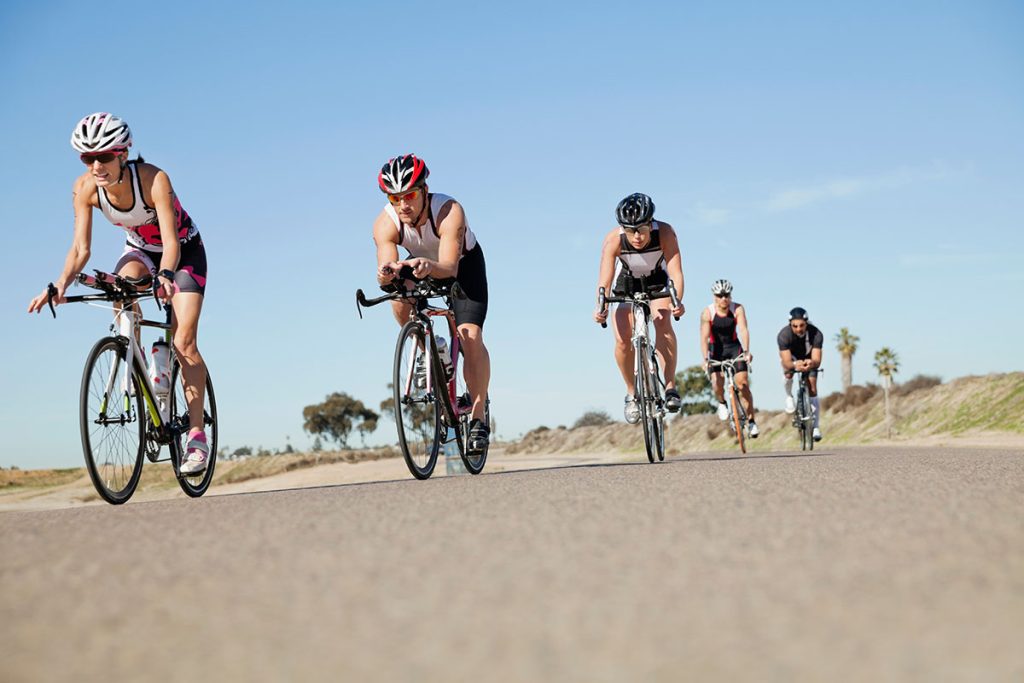
The biking portion of triathlon requires the most equipment and gear. However, there are only a few race rules regarding the actual bike, so you don’t need to invest in a new, lightweight carbon frame with race wheels. It is important to note that whatever type of bike you own or choose to use for your event, it should fit your body well. Take the time and effort to see a bike specialist to have a professional bike fitting done.
Training. Include two to three bike sessions per week, building up to the distance appropriate for your race. And don’t forget to include some hill training, especially if your race will include steep inclines. Resistance exercises should include squats and leg presses.
Technique. When cycling, your most efficient cadence will vary depending on your bike, your fitness level, and the terrain, so practice riding in different gears and at varied elevations to find what is best for you and your body. You will want to practice shifting smoothly between different gears, stopping, starting, turning, slowing down, and taking a drink from your water bottle.
Type of gear. Clearly, the type of bike you choose is your most crucial piece of equipment for this portion of the race. There are many different bike styles, but a standard road bike will give you better race time. Helmets are required, and clipless bike pedals and proper bike shoes will drastically improve your cycling power and efficiency. Make sure you have a repair kit with spare tubes and a water bottle.
Running
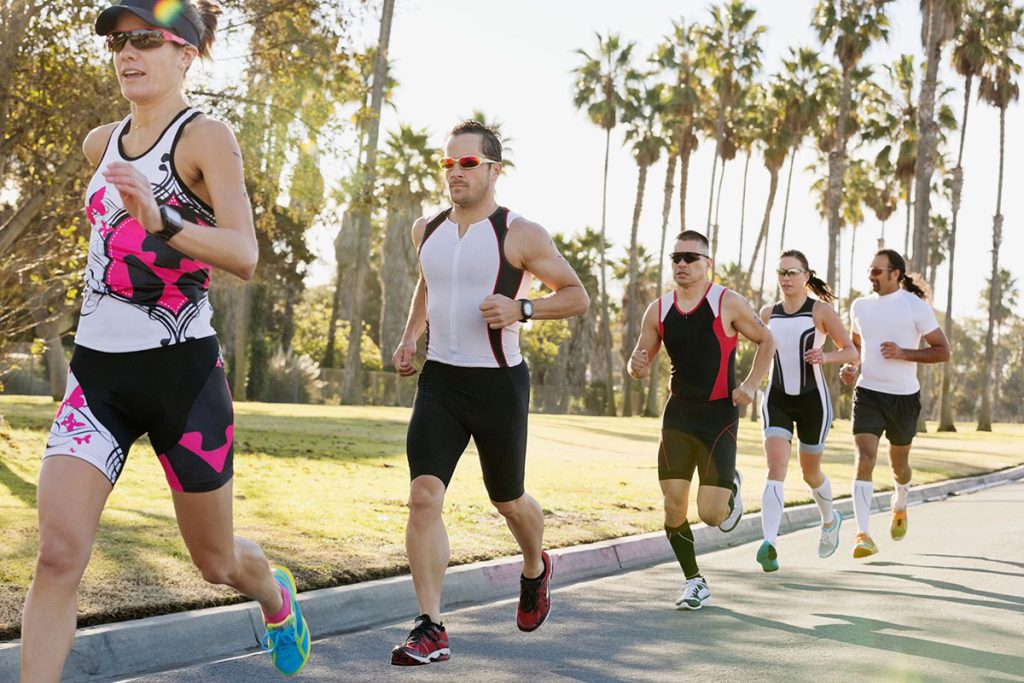
If you’re not used to running, start your training slowly. Run one mile if you can, then work your way up until you reach your goal for the triathlon. Following a run-walk plan is helpful and effective for new runners. Running is also the riskiest of the three disciplines when it comes to injuries. Always keep your core engaged and your eyes forward when running.
Training. Run two to three times per week, as well as run right after one of your bike rides. If you're able, try to include speed workouts on a track. By doing quick bursts of running you will build speed and endurance, and learn how to pace yourself.
Technique. Your stride is important when you are doing long-distance running. Lean forward, keep your elbows bent at 90 degrees, and allow your arms to swing forward and back from the shoulders. Move your legs in time with your arms, quickly moving on to the next step.
Type of gear. The right running clothes and a pair of high-quality running shoes are all you need for this part of the race.
Nurture your Body with Food

When you train, you burn a lot of energy. To refuel properly, eat plenty of carbs and lean proteins. Foods like pasta, salmon, eggs, broccoli, and leafy greens are all great options to help replenish your body. Adjust caloric intake based on your individual needs.
A great way to keep track of what you’re eating is by writing it down in a food journal. Prepare food a week in advance, and have ready-to-eat meals in the fridge waiting after your workout. Consider hiring a nutritionist to help accomplish your food and training goals.
Seek Support from Others
Training for a triathlon requires a lot of dedication, sacrifice, and hard work. Doing it alone can be accomplished if you have a positive and strong mental attitude, but training with others will amplify your determination and keep you going. Join a swimming or cycling program at your local gym, or seek out a local running club. Another option is hiring a coach to help with your training. Having a coach will greatly improve your chances of accomplishing the goals you set for yourself. They will be able to show you step-by-step how you can train for a triathlon while pushing you to your limits.
Put your Training to the Test
When you decide it’s time to train for and participate in your first triathlon, that’s an accomplishment in and of itself. Put together a proper training program, gather the appropriate equipment, remember to fuel your body properly, and get plenty of rest between your training. Enjoy your new journey as a triathlete!
Featured image by: Sidekick.


